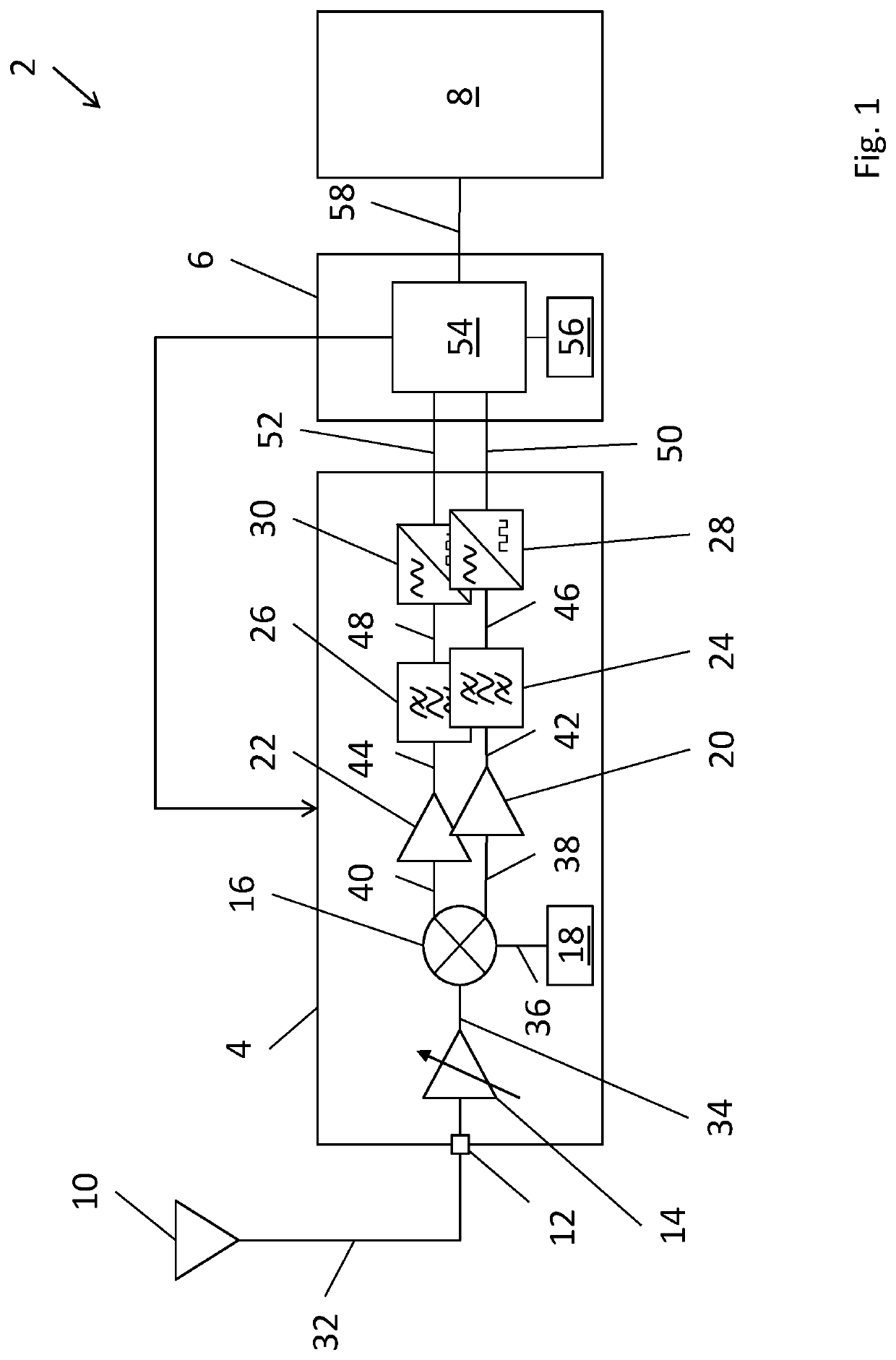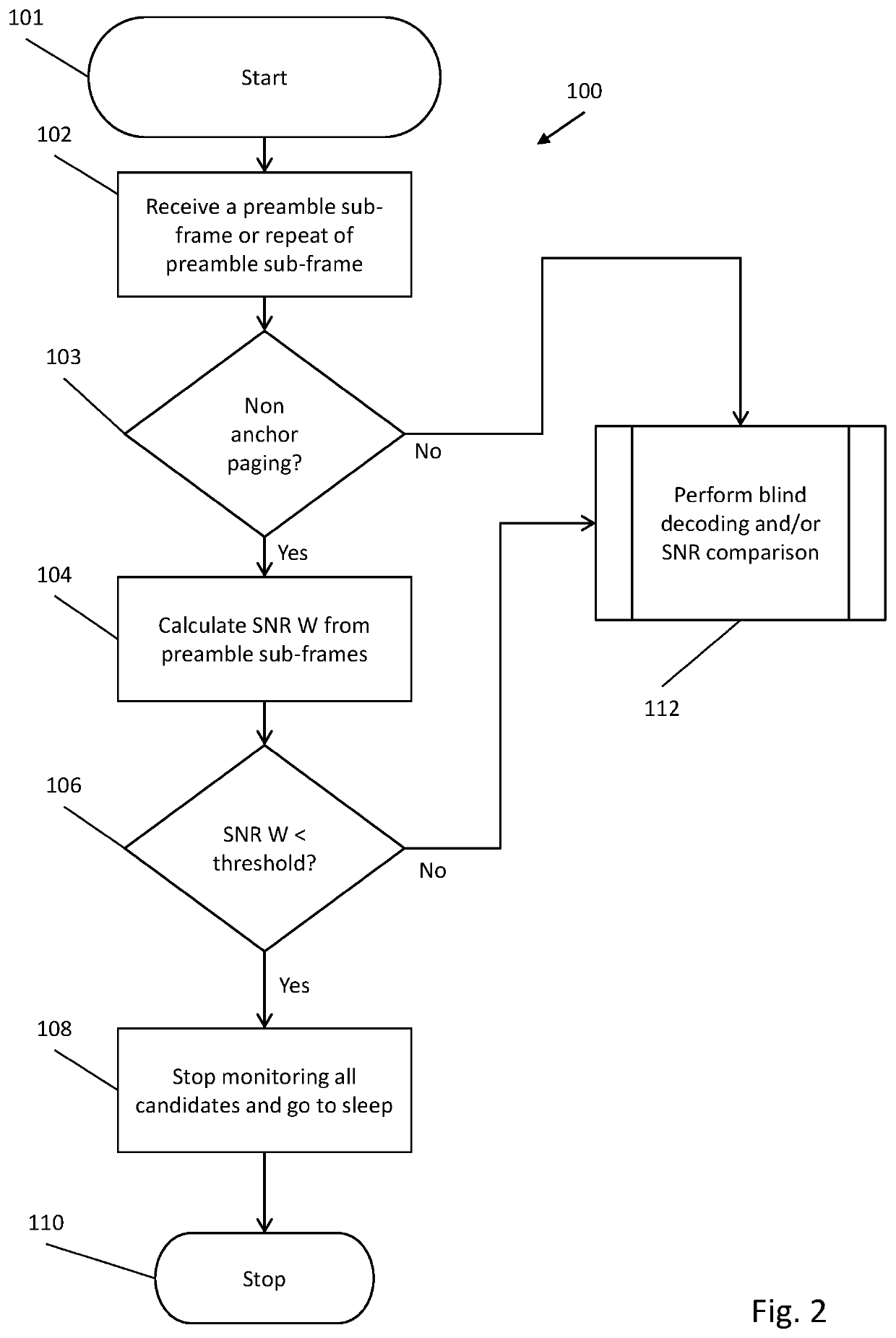Radio communication
a radio communication and data packet technology, applied in the field of radio communication, can solve the problems of consuming more power than is necessary, and achieve the effect of greater received signal strength and greater received signal strength
- Summary
- Abstract
- Description
- Claims
- Application Information
AI Technical Summary
Benefits of technology
Problems solved by technology
Method used
Image
Examples
Embodiment Construction
[0233]FIG. 1 is a block diagram of an LTE radio receiver device 2 (or User Equipment, ‘UE’ as used interchangeably hereinafter). The receiver 2 is implemented as a system-on-chip (SoC) and comprises: a front-end circuit portion 4; a digital circuit portion 6; and a further circuit portion 8. The structure and operation of each of these circuit portions 4, 6, 8 are described in turn below.
[0234]The analogue RF front-end circuit portion 4 is arranged to be connected to an antenna 10 via an antenna terminal 12 for receiving LTE radio signals received over-the-air. The front-end circuit portion 4 comprises: a variable gain pre-amplifier 14; a mixer 16; a local oscillator 18; an in-phase amplifier 20; a quadrature amplifier 22; two bandpass filters 24, 26; an in-phase analogue-to-digital converter (ADC) 28, and a quadrature ADC 30.
[0235]When an incoming LTE radio signal 32 is received via the antenna 10, it is first input to the variable gain pre-amplifier 14 which amplifies the signal 3...
PUM
 Login to View More
Login to View More Abstract
Description
Claims
Application Information
 Login to View More
Login to View More - R&D
- Intellectual Property
- Life Sciences
- Materials
- Tech Scout
- Unparalleled Data Quality
- Higher Quality Content
- 60% Fewer Hallucinations
Browse by: Latest US Patents, China's latest patents, Technical Efficacy Thesaurus, Application Domain, Technology Topic, Popular Technical Reports.
© 2025 PatSnap. All rights reserved.Legal|Privacy policy|Modern Slavery Act Transparency Statement|Sitemap|About US| Contact US: help@patsnap.com



